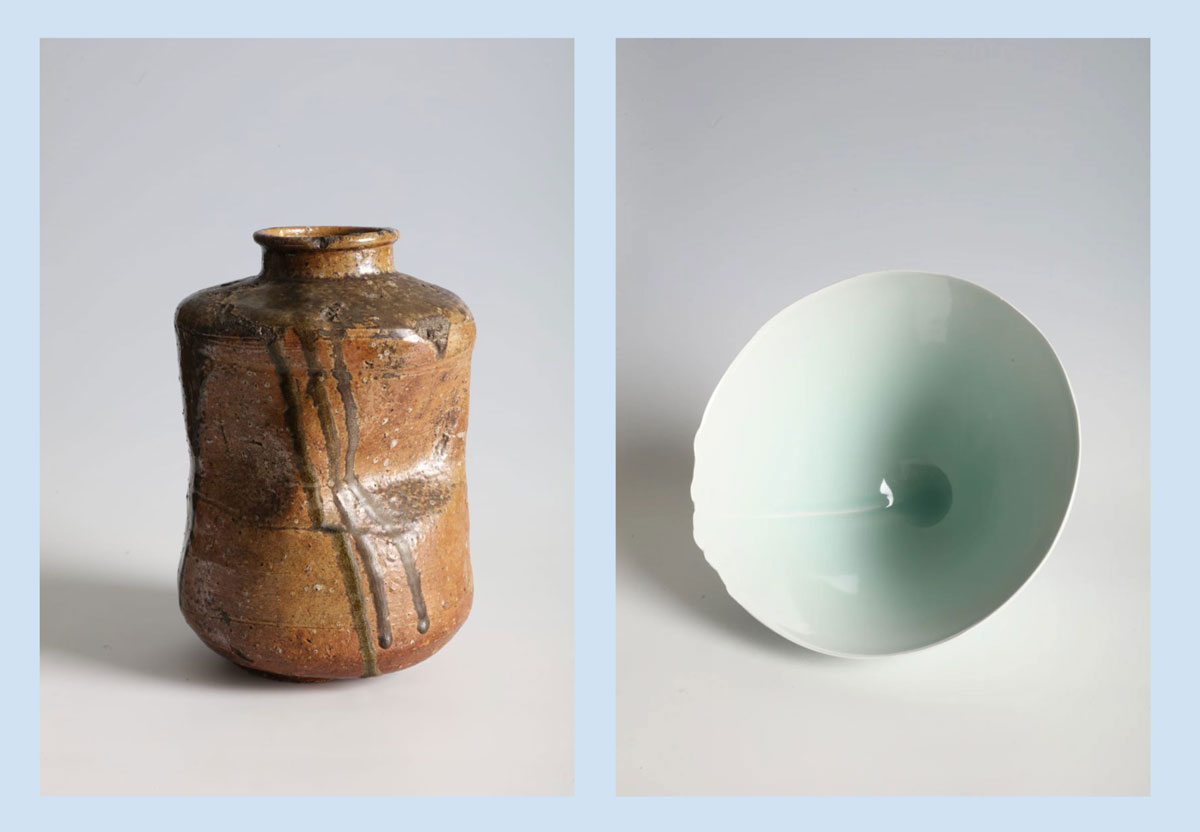
(Left): Shigaraki Jar, 16th/17th century, stoneware with natural ash glaze, 12¼ x 8¾ x 8½ in. (31 x 22 x 21.5 cm); (Right): Fukami Sueharu (b. 1947), Chū (Midair), 2023, porcelain with seihakuji glaze , 11 x 12 x 11 in. (28 x 30.5 x 28 cm)
Japanese Ceramics: Medieval to Contemporary
April 24 – May 18 2024
Thomsen Gallery is delighted to present their Spring exhibition, Japanese Ceramics: Medieval to Contemporary. This special show—devoted to a key component of the Japanese aesthetic tradition that is as dynamic today as it was 10,000 years ago—starts with a small group of stoneware vessels dating from the sixth to the seventeenth century with dynamic surface finishes that complement the vessels’ robust forms and rugged surfaces.
The show continues with work by ceramic artists in the Mingei tradition (founded in the 1920s) who played a key role in shaping the American taste for contemporary Japanese ceramics during the early postwar period, notably a jaunty vase with signature cross motifs executed in poured glaze by Hamada Shōji and a formal flower container by Shinkai Kanzan exemplifing the refinement of ceramics made in Kyoto, Japan’s ancient capital.
Contemporary Japanese porcelain forms an important component of their Spring show with masterpieces by two Living National Treasures, Nakajima Hiroshi and Tokuda Yasokichi III. Nakajima was admired for his beautiful celadon glazes while Tokuda was celebrated for his use of his family’s traditional glaze colors to create gradated abstract patterning applied to perfectly wheel-thrown, glowing vessels.
The show concludes with another group of outstanding works—including both vessels and pure sculptures—by Fukami Sueharu, an artist whom Thomsen Gallery has maintained a close connection with for more than three decades. His wheel-thrown or pressure-cast porcelain sculptures, finished in a luminous bluish-white glaze that originated in eleventh-century China, are admired in public collections around the world.
To view these pieces and learn more, click here.
